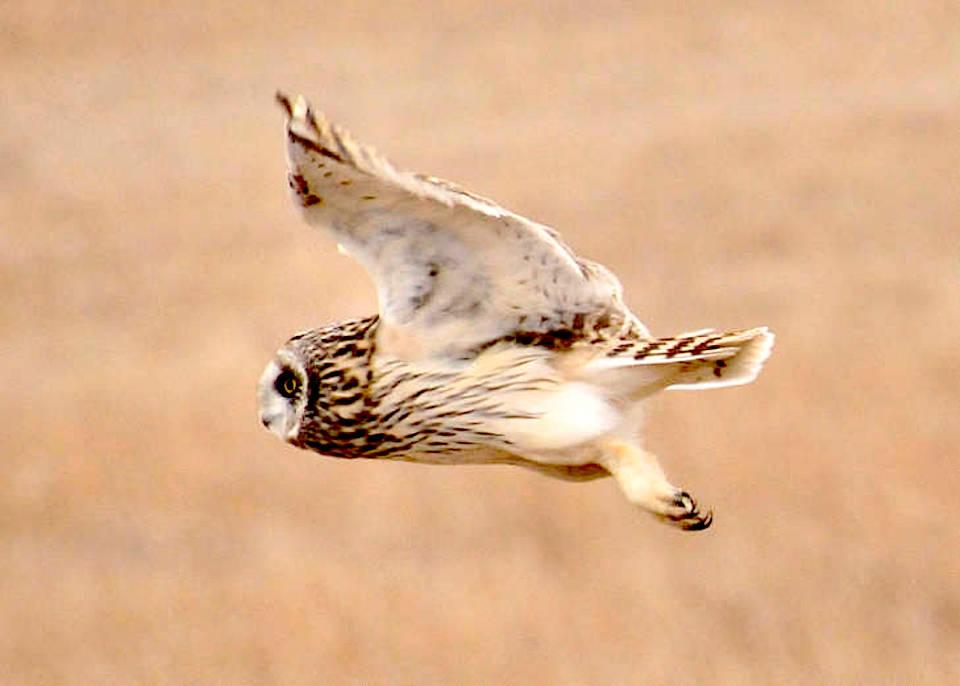
A Short-eared owl in flight/USFWS file, Tom Koerner
Gettysburg National Military Park rightfully protects hallowed ground. But it also serves as a nature preserve of sorts, as evidenced by the increasing number of birders who visit the park to spot and photograph, among other species, short-eared owls.
The following account is from Dafna Reiner, the park biologist at Gettysburg.
Last winter birders and wildlife photographers flocked to the fields of Pickett’s Charge to view and photograph short-eared owls. It was great to see Civil War history buffs mingle with natural history buffs as both enjoyed viewing these charismatic birds. The most unique thing about this species is that, unlike other owls, they are active during daylight, making photography and observation relatively easy. They are most active before dusk, but they may be seen even before that.
All plant and wildlife are legally protected in our nation’s national parks, and we take extra special care to protect rare species. The U.S. Fish and Wildlife Service lists the short-eared owls as Migratory Birds of Conservation Concern and in the Commonwealth of Pennsylvania they are classified as Endangered.
For their winter habitat these owls prefer open grassy areas in close proximity to woods. They look for clumps of tall grass to hide in when they are not foraging. Last winter the area around the Virginia Monument was perfect for their needs. It was also perfect for the needs of photographers. Easy parking, easy access and dramatic backdrops.
Everyone wanted to take that perfect photo of a short-eared owl perched on a worm fence or taking flight with a cannon or a monument in the background. Unfortunately, some photographers went too far in their quest for that perfect shot. We saw many cases of people walking through the fields trying to flush out the owls and causing them to take flight. We also had at least one case where an individual was broadcasting owl calls aimed at getting the owls to come out and investigate. Human activities such as approaching, flushing, making or playing calls constitute wildlife harassment. Simply put, any activity that causes an owl to change its behavior is harassment and is therefore illegal.

You may wonder what harm is done when a person walks through a field to flush an owl. It seems pretty harmless, right? Not to the owl. By the time the owls arrive in their wintering grounds they have traveled many, many miles. They are low in energy reserves and must find and acclimate to a new location. Even after they have been here for a while their survival is not certain.
The winter environment is harsh and prey may be scarce. Energy conservation is of the utmost importance to their survival. Each time an owl is disturbed, it takes flight to escape the perceived threat, and expends a lot of energy. Furthermore, following a disturbance the owl may wait a long time to assure the danger has passed, thus loosing time it could have spent foraging. Just like humans, short and long term stress brings negative health impacts to the owls.
In the winter of 2017-18 incidents of owl harassment became so numerous that park management decided to close the area used by the owls for concealment. Many photographers were dismayed by this action but it was necessary to protect the owls. At the time of this blog writing there have been only very sporadic sightings on the battlefield. If sightings become more frequent and consistent the park will post informational signs asking the public to maintain their distance and not harass the owls. The signs will have a 24-hour/7 days a week phone number that can be called to report owl harassment to Law Enforcement Rangers. It is our hope that these signs will suffice and that we will not have to close down the area chosen by the owls.
Please help us to keep owl areas open by obeying the posted signs and immediately reporting owl harassment to 717-334-8101. Let’s work together so that owls and humans can have a positive winter experience here at Gettysburg National Military Park.



Add comment